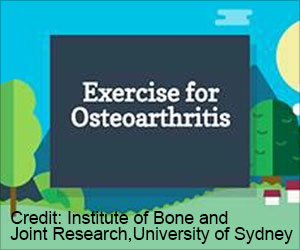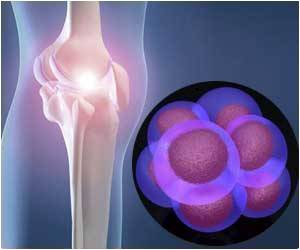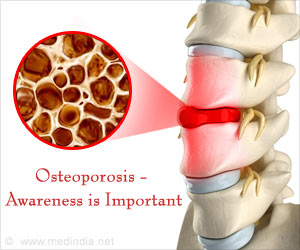Maintaining adenosine supplies, which is known to nourish the chondrocyte cells that make cartilage, can prevent osteoarthritis, reports a new study.

In the new NYU Grossman School of Medicine-led study, researchers injected adenosine into the joints of rodents whose limbs had been damaged by inflammation resulting from either traumatic injury, such as a torn ligament, or from massive weight gain placing pressure on joints. The biological damage in these cases is similar, researchers say, to that sustained in human osteoarthritis.
Publishing online in the journal Scientific Reports on Aug. 10, the study rodents received eight weekly injections of adenosine, which prompted regrowth rates of cartilage tissue between 50 percent and 35 percent as measured by standard laboratory scores.
"Our latest study shows that replenishing adenosine stores by injection works well as a treatment for osteoarthritis in animal models of the disease, and with no apparent side effects," says lead study author Carmen Corciulo, Ph.D., a postdoctoral fellow at NYU Langone.
Corciulo says it is too soon to use this experimental model as a therapy in people. Clinical trials must await a test drug that can be safely stored for days if not weeks, and experiments in larger mammals.
Study senior investigator Bruce Cronstein, MD, the Dr. Paul R. Esserman Professor of Medicine at NYU Langone Health, says the team's research is important because the few existing drug therapies for osteoarthritis, such as acetaminophen and COX-2 inhibitor drugs, including naproxen and ibuprofen, only numb joint pain, or like hyaluronic acid, just lubricate its tissues. None stall disease progression or reverse the damage. Painkillers, such as opioids, are often prescribed, but are also highly addictive, he cautions.
Advertisement
Cronstein, Corciulo, and NYU Grossman School of Medicine have a patent application pending for the use of adenosine and other agents that help with its binding to chondrocytes, called A2A receptor agonists, for the treatment of osteoarthritis.
Developing treatments to halt or slow the disease is important, Cronstein says, because well over 100 million people worldwide are estimated to have osteoarthritis, which is tied to aging, especially in women. This figure, he says, is only expected to grow as more people live longer and obesity rates climb.
"Right now, the only way to stop osteoarthritis is to have affected joints surgically replaced, which not only comes with pain and risk of infection but is also quite costly," says Cronstein. "If new therapies can delay or prevent disease onset and progression, then fewer joint replacements will save people from a lot of pain and expense."
Source-Eurekalert









